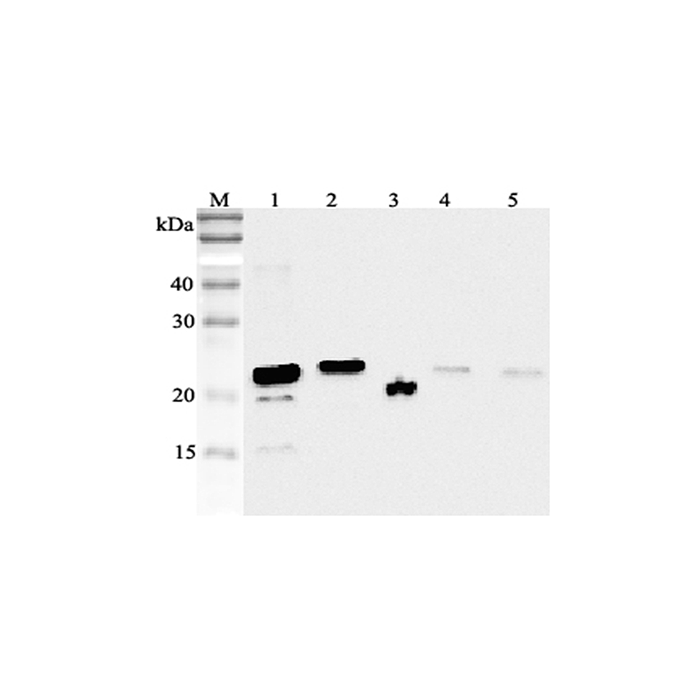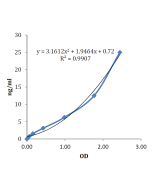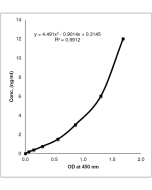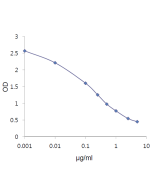Cookie Policy: This site uses cookies to improve your experience. You can find out more about our use of cookies in our Privacy Policy. By continuing to browse this site you agree to our use of cookies.
AdipoGen Life Sciences
anti-RBP4 (human), pAb
As low as
390
CHF
CHF 390.00
In stock
Only %1 left
AG-25A-0053-C100100 µgCHF 390.00

Figure 1: Western blot analysis using anti-RBP4 (human), pAb (Prod. No. AG-25A-0053) at 1:2'000 dilution.
1: Human RBP4 (His-tagged).
2: Human RBP4 (FLAG®-tagged).
3: Human serum (2μl).
4: Mouse RBP4 (FLAG®-tagged).
5: Rat RBP4 (FLAG®-tagged).
1: Human RBP4 (His-tagged).
2: Human RBP4 (FLAG®-tagged).
3: Human serum (2μl).
4: Mouse RBP4 (FLAG®-tagged).
5: Rat RBP4 (FLAG®-tagged).
| Product Details | |
|---|---|
| Synonyms | Retinol Binding Protein 4 |
| Product Type | Polyclonal Antibody |
| Properties | |
| Source/Host | Guinea pig |
| Immunogen/Antigen | Recombinant human RBP4. |
| Application |
ELISA: (direct and indirect: 1:2’000-1:5’000) Western Blot: (1:2’000-1:5’000 using ECL; suggested blocking and dilution buffer is PBST containing 0.05% Tween 20 and 5% skim milk; suggested incubation time is 1 hour at room temperature). Optimal conditions must be determined individually for each application. |
| Crossreactivity | Human |
| Specificity | Recognizes human RBP4. Detects a band of ~22-25kDa by Western blot. Weakly cross-reacts with mouse and rat RBP4. |
| Purity Detail | Protein A-affinity purified. |
| Concentration | 1mg/ml |
| Formulation | Liquid. 0.2μm-filtered solution in PBS, pH 7.4. Contains no preservatives. |
| Shipping and Handling | |
| Shipping | BLUE ICE |
| Short Term Storage | +4°C |
| Long Term Storage | -20°C |
| Handling Advice |
After opening, prepare aliquots and store at -20°C. Avoid freeze/thaw cycles. |
| Use/Stability | Stable for at least 6 months after receipt when stored at -20°C. |
| Documents | |
| MSDS |
 Download PDF Download PDF |
| Product Specification Sheet | |
| Datasheet |
 Download PDF Download PDF |
Description
Retinol binding protein 4 (RBP4; RBP) is a 21kDa secreted protein, a member of the lipocalin family and is known as the primary transporter of retinol (vitamin A) to tissues. A recent report revealed RBP4 as an adipokine linking glucose transporter 4 (GLUT4) suppression in adipose tissue to insulin. Elevated human and mouse serum RBP4 levels are associated with insulin resistance and its severity, obesity, and certain components of metabolic syndrome. Furthermore, human serum RBP4 levels are closely related to renal function.
Product References
- Role of (-)-epigallocatechin-3-gallate in cell viability, lipogenesis, and retinol-binding protein 4 expression in adipocytes: H.Y. Sung, et al.; Naunyn Schmiedebergs Arch. Pharmacol. 382, 303 (2010)









